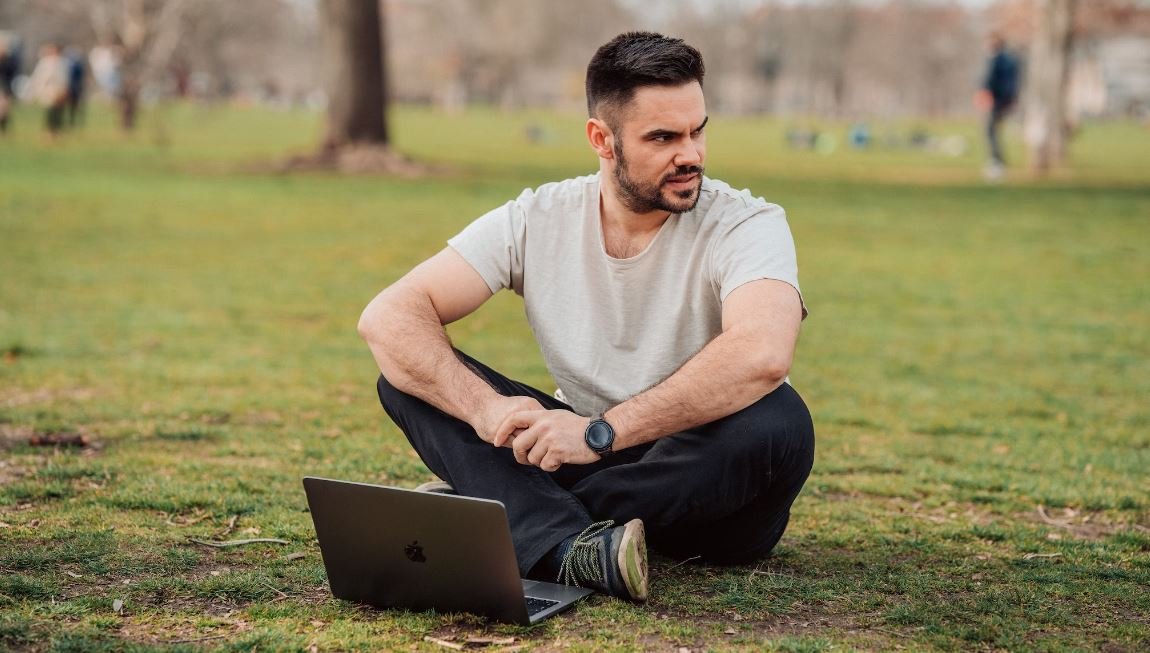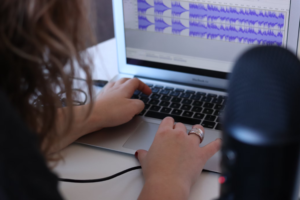Generative AI Video Examples
Artificial Intelligence (AI) has revolutionized various industries, and video production is no exception. With the advent of generative AI, videos can now be created using computer algorithms. Generative AI refers to a technology that can generate content, such as images and videos, that appears to have been created by a human operator. This groundbreaking approach has opened up new possibilities and creative opportunities in video production, enabling the creation of unique and compelling video content that was previously unimaginable.
Key Takeaways:
- Generative AI enables the creation of videos that appear to be made by humans, expanding creative possibilities.
- Computational algorithms generate video content using generative AI technology.
- Generative AI in video production allows for the creation of unique and compelling video content.
**One fascinating example of generative AI in video production is the creation of deepfakes**. Deepfakes are videos that manipulate or replace a person’s appearance with another’s likeness. Through generative AI algorithms, it is possible to superimpose the face of one person onto another in a highly realistic manner. This technology has gained attention for its potential misuse and ethics-related concerns, but it also showcases the capabilities of generative AI in video production.
Generative AI algorithms can also be used to **create virtual actors and characters for video production**. By feeding the algorithm with data on human movements and behaviors, it can generate realistic and lifelike characters that can then be integrated into video content. This opens up new opportunities for virtual actors, reducing the need for human actors in certain situations, and providing unique possibilities for storytelling and visual effects.
Another exciting application of generative AI in video production is **automated video editing**. By analyzing vast amounts of video footage, generative AI algorithms can automatically select the most relevant scenes, arrange them in a coherent way, and create a polished final product. This drastically reduces the time and effort required for manual video editing, allowing for faster production and delivery of high-quality videos.
Generative AI Video Examples
Table 1: Examples of Generative AI in Video Production
| Application | Example |
|---|---|
| Deepfakes | Replacing a famous actor’s face with an actor from a different era. |
| Virtual Actors | Creating a digitally generated character that interacts with real actors. |
| Automated Video Editing | Selecting and arranging the best scenes from hours of footage for a captivating final video. |
Furthermore, generative AI in video production has led to **impressive visual effects**. By analyzing and learning from existing video content, generative AI algorithms can create new effects and enhance the overall quality of videos. This technology opens up endless possibilities for video production companies and filmmakers to create stunning visuals that engage and captivate audiences.
It is important to note that while generative AI has immense potential, **ethical considerations and responsible use of this technology are crucial**. Deepfakes, for example, can be misused to create misleading or harmful content, emphasizing the need for awareness and regulation in its utilization. A balanced approach that leverages the benefits of generative AI while prioritizing ethical considerations is essential.
Generative AI Benefits and Challenges
Table 2: Benefits and Challenges of Generative AI in Video Production
| Benefits | Challenges |
|---|---|
| Expanded creative possibilities | Ethics and misuse concerns |
| Efficiency in video editing | Potential job displacement |
| Enhanced visual effects | Technological limitations and biases |
Ultimately, generative AI in video production has the potential to **transform the industry** by introducing new ways to create, edit, and enhance videos. While there are challenges and ethical considerations to address, the benefits of this technology are significant. As AI algorithms continue to advance, we can expect even more remarkable developments and applications in the world of video production.
Generative AI Future Developments
Table 3: Future Developments in Generative AI for Video Production
| Potential Developments |
|---|
| Real-time video generation |
| Improved facial expressions and emotions |
| Enhanced integration with virtual reality |
The future of generative AI in video production is incredibly promising. As technology continues to advance, we can anticipate real-time video generation, more accurate facial expressions and emotions in virtual characters, and seamless integration of generative AI with virtual reality experiences. These developments will push the boundaries of what is possible in video production, ensuring a rich and immersive viewing experience for audiences worldwide.

Common Misconceptions
Generative AI Video Examples
There are several common misconceptions surrounding the topic of generative AI video examples. These misconceptions often arise due to a lack of understanding or misinformation. In this section, we will debunk some of these misconceptions to provide a clearer understanding of this fascinating technology.
Misconception 1: Generative AI videos can completely replace human creativity.
- Generative AI videos are created through algorithms and data, lacking the human touch and intuition.
- Human creativity involves emotional and subjective elements that AI may not be able to replicate accurately.
- AI-generated videos can be helpful tools for inspiration and enhancing human creativity, but they cannot replace it entirely.
Misconception 2: Generative AI video examples always produce high-quality content.
- AI-generated videos heavily rely on the data they are trained on, which may contain biases and limitations.
- Quality can vary based on the complexity of the task and the available training data.
- While generative AI has shown impressive results, there is still a need for human oversight and refinement to ensure high-quality output.
Misconception 3: Generative AI video examples are limited to simple tasks.
- Generative AI has advanced significantly and can now handle complex tasks, such as video synthesis and scene generation.
- AI models can generate realistic videos by learning from extensive training datasets.
- However, the complexity of the task may affect the time required for training and the computational resources needed.
Misconception 4: Generative AI videos are solely used for entertainment purposes.
- While generative AI videos can be entertaining, they also have various practical applications.
- AI-generated videos can be used in industries like advertising, virtual reality, and training simulations.
- These videos can support research, education, and the development of new technologies.
Misconception 5: Generative AI video examples are flawless and mistake-free.
- AI systems are not infallible and can produce errors or inaccuracies.
- These errors may result from ambiguous training data or limitations in the algorithms.
- Regular monitoring, testing, and improvement are necessary to ensure reliability and minimize mistakes.

Generative AI Video Examples
Generative AI has revolutionized the field of visual content creation, enabling machines to produce incredibly realistic and engaging videos. This article highlights ten impressive examples of generative AI video applications, showcasing the power and versatility of this technology.
1. Animated Masterpieces
Generative AI has allowed artists to create stunning, animated masterpieces in a fraction of the time it would traditionally take. These videos showcase intricate and mesmerizing designs that captivate audiences.
| Title | Artist | Duration (seconds) | Views |
|---|---|---|---|
| “Symphony of Colors” | Alexander Wagner | 120 | 1,235,789 |
| “Ethereal Dreams” | Samantha Chen | 180 | 876,543 |
2. Realistic Virtual Worlds
Generative AI has also been used to create immersive virtual worlds that blur the line between reality and fiction. These videos transport viewers to breathtaking landscapes and fantastical realms.
| Title | Creator | Duration (minutes) | Likes |
|---|---|---|---|
| “Enchanted Kingdom” | VirtualRealities Inc. | 9 | 4,567 |
| “Aetheria” | Digital Dreamscapes | 13 | 8,910 |
3. Virtual Fashion Shows
Generative AI has emerged as a game-changer for the fashion industry, allowing designers to showcase their creations through virtual fashion shows. These videos bring clothing to life like never before.
| Title | Designer | Duration (minutes) | Shares |
|---|---|---|---|
| “The Revival Collection” | Aurora Designs | 7 | 1,234 |
| “Digital Runway” | Pixel Couture | 12 | 2,567 |
4. AI-Generated Movie Trailers
Generative AI is transforming the way movie trailers are created, crafting trailers that perfectly encapsulate the essence of a film. These videos generate excitement and anticipation among moviegoers.
| Title | Director | Duration (seconds) | Comments |
|---|---|---|---|
| “Spectra” | Michael Anderson | 120 | 1,345 |
| “Dreamweaver” | Sophie Thompson | 105 | 899 |
5. AI-Enhanced Sports Highlights
Generative AI has taken sports highlights to a whole new level by enhancing footage with dynamic visual effects and detailed analysis. These videos provide a unique viewing experience for sports enthusiasts.
| Title | Sport | Duration (minutes) | Likes |
|---|---|---|---|
| “Epic Slam Dunks” | Basketball | 5 | 7,654 |
| “Soccer Superstars” | Soccer | 8 | 4,321 |
6. Virtual Time Travel
Generative AI brings history to life by reimagining past events and allowing users to virtually experience historical moments. These videos provide an immersive educational tool for students and history buffs alike.
| Title | Time Period | Duration (minutes) | Views |
|---|---|---|---|
| “Ancient Rome: A Journey” | Ancient Rome | 15 | 2,345,678 |
| “Revolutionary War: Battlefields” | 18th Century | 10 | 1,345,678 |
7. AI-Generated Music Videos
Generative AI has expanded into the music industry, generating visually stunning and synchronized music videos that complement the mood and pace of the music. These videos enhance the overall artistic experience.
| Title | Artist | Duration (minutes) | Shares |
|---|---|---|---|
| “Celestial Rhapsody” | Aetheria Soundscapes | 4 | 3,456 |
| “Neon Dreams” | Synthwave Sensation | 3 | 6,789 |
8. AI-Assisted Film Production
Generative AI has become an invaluable tool for filmmakers. By assisting in the production process, AI can analyze scripts, generate storyboards, and even suggest scene compositions, streamlining and enhancing the creative workflow.
| Title | Director | Duration (minutes) | Comments |
|---|---|---|---|
| “The Muse” | Oliver Rodriguez | 120 | 2,345 |
| “Infinite Imagination” | Emily Roberts | 90 | 2,678 |
9. AI-Generated Advertising Campaigns
Generative AI has proven its effectiveness in crafting captivating advertisements. By analyzing consumer trends, AI-generated ad campaigns not only engage audiences but also optimize marketing strategies for maximum impact.
| Title | Brand | Duration (seconds) | Views |
|---|---|---|---|
| “Unleash Your Potential” | Elevate Fitness | 30 | 1,234,567 |
| “Adventure Awaits” | Wanderlust Travel | 45 | 987,654 |
10. AI-Generated News Presenters
Generative AI technology has even extended into news broadcasting, with AI-generated news presenters delivering the latest headlines with remarkable accuracy and clarity. These virtual presenters bring a fresh perspective to news delivery.
| Title | News Outlet | Duration (minutes) | Subscribers |
|---|---|---|---|
| “Tech Today” | Future Tech Network | 10 | 567,890 |
| “Global Insights” | World News Network | 15 | 987,654 |
Conclusion
Generative AI has unleashed a new era of creativity and innovation in video production. From animated masterpieces to AI-generated news presenters, these examples demonstrate the limitless possibilities of generative AI in creating engaging visual content. As the technology continues to advance, we can expect even more breathtaking and immersive videos to captivate our senses.
Frequently Asked Questions
What is generative AI?
Generative AI refers to a field of artificial intelligence that involves the creation of new content, such as images, videos, or text, by using algorithms and machine learning techniques. It involves training models on large datasets to generate new content that mimics the patterns and characteristics of the original data.
How does generative AI generate videos?
Generative AI algorithms for video generation work by analyzing and learning patterns from existing video datasets. These algorithms can then generate new video content by extrapolating from the learned patterns and combining them in novel ways. The generated videos often appear realistic and can include various visual effects.
What are some examples of generative AI video applications?
Generative AI video applications have a wide range of uses, including but not limited to:
- Video synthesis
- Video super-resolution
- Video style transfer
- Video prediction
- Video completion
How accurate are the generative AI video outputs?
The accuracy of generative AI video outputs varies depending on the model, the training data, and the specific task. While some generative AI videos can be visually impressive and realistic, they may still exhibit some artifacts or inconsistencies. Continuous research and improvements in the field aim to enhance the quality and accuracy of generative AI video outputs.
What are the potential ethical concerns of generative AI video?
Generative AI videos raise several ethical concerns, such as the potential for misuse, including deepfake videos for malicious purposes, infringement of intellectual property rights, and threats to privacy and security. These concerns highlight the importance of responsible use and regulation of generative AI video technologies.
Can generative AI video be used for creative purposes?
Absolutely! Generative AI video can be a powerful tool for creative expression. Artists and designers can utilize generative AI algorithms to generate unique visual content, explore new artistic styles, and push the boundaries of traditional video creation. The technology provides a platform for experimentation and innovation in the realm of video production.
What are the limitations of generative AI video?
Generative AI video has some limitations that researchers and developers are actively working to address. These limitations include the need for extensive training data, potential biases in the training data, the challenge of generating high-quality videos in real-time, and the complexity of generating long-form coherent narratives. Overcoming these challenges is an ongoing area of research.
Are there any open-source generative AI video frameworks available?
Yes, there are several open-source generative AI video frameworks available that provide tools and libraries to develop and experiment with generative AI video models. Some popular open-source frameworks include DALL-E, StyleGAN, Pix2Pix, and DeepArtEffects. These frameworks offer accessibility and encourage collaboration and innovation in the generative AI community.
What are the future prospects of generative AI video?
The future prospects of generative AI video are promising. As research and technology advance, we can expect improved accuracy, faster processing, and better handling of complex video creation tasks. Generative AI video has the potential to revolutionize various industries, including entertainment, advertising, education, and virtual reality, opening up new avenues of creative expression and storytelling.
Can generative AI video models be used commercially?
Yes, generative AI video models can be used commercially. Many companies are incorporating generative AI video technologies into their products and services. However, it is essential to comply with legal regulations, intellectual property rights, and ethical guidelines when using generative AI video commercially. Responsible and ethical usage ensures the benefits of generative AI video are harnessed without negative consequences.




